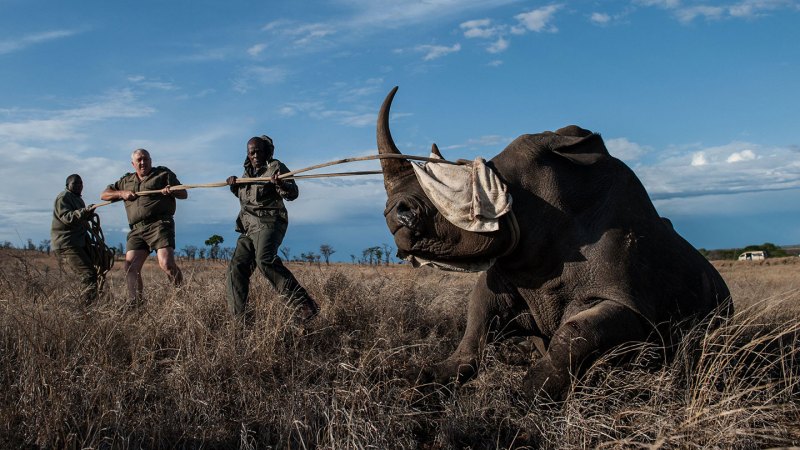In 1988, police officers in Australia came for Ian Dadour. Not because the entomologist was under arrest, but because they needed his expertise. Investigators asked Dadour to estimate the ages of maggots found on a human body to help them gauge when a homicide victim had been killed. Dadour went on to teach this and other entomology-based forensic methods to the South African Police Service. Today, officers are using these tools to investigate another type of crime: rhino poaching.
South Africa is home to thousands of rhinos, including critically endangered black rhinos (Diceros bicornis) and near-threatened white rhinos (Ceratotherium simum). Poachers kill hundreds of rhinos every year, usually for the animals’ horns (SN: 4/9/20). The country’s police force adopted forensic entomology into its poaching prevention arsenal in 2014, training officers to collect insect evidence found at wildlife crime scenes.
The process works the same with rhinos as it does with humans, says Dadour, now of Source Certain, an Australian company that verifies the origin of agriculture and seafood. Officers collect adults, larvae and eggs of carrion insects such as flies and beetles from the victim. Carrion insects are quick to find and lay eggs on a dead body — often descending in under an hour — which then hatch and develop at a predictable pace. In that way, they act as a biological clock.
Forensic entomologists can estimate how long a body has been dead based on what insects are present and the life cycle stage of the insects’ offspring. That estimate is called a minimum postmortem interval. The method is most accurate before and during active decay; as decomposition progresses, accuracy drops. “When the conditions are right, it can be very useful,” says Martin Villet, a forensic entomologist based in Cape Town, South Africa. Investigators can use the data to track down killers and prosecutors can use it as evidence in the courtroom.
Dadour and Melanie Pienaar — a forensic entomologist at the South African Police Service — wanted to document which insects were used to investigate rhino deaths. They examined 19 cases of rhino poaching that were investigated in part using forensic entomology. Their analysis of the cases, which occurred between 2014 and 2021, involved tallying the various insect species present at each stage of decomposition, comparing the minimum postmortem interval estimates and factoring in the average ambient temperature during each time period. Villet was not involved with the project.
Of the 119 insects collected from the rhinos, blowflies (Diptera) and beetles (Coleoptera) were the most abundant and useful for calculating the minimum postmortem interval for each rhino, the team reports October 9 in Medical and Veterinary Entomology. Some bugs (Hemiptera) were also present, but weren’t as helpful for these calculations.
Forensic entomology isn’t a stand-alone tool, but rather something that can be used with other evidence, such as cell phone records, to place perpetrators at a crime scene. In one poaching case that Dadour and Pienaar reviewed, the time frame provided by the insects was used to help sentence a poacher to prison, Dadour says.
“The main take-home message really is that the methods that we use on humans can be used in exactly the same way on animal cases,” says Amoret Whitaker, a forensic entomologist at the University of Winchester in England who was not involved with the work. “It’s really interesting to see this being used on such an important species.”
Dadour has trained wildlife officers to use the technique outside of rhino poaching, for example when keeping tabs on endangered Australian marsupials called numbats (Myrmecobius fasciatus) (SN: 1/11/24). It can also be used in animal cruelty cases.
However, forensic entomology isn’t widely used to investigate wildlife crimes, Dadour says. For South Africa’s rhinos, at least, it and other antipoaching measures have helped populations slowly increase, he says. “It’s been a lot of hard work to get to this point.”


